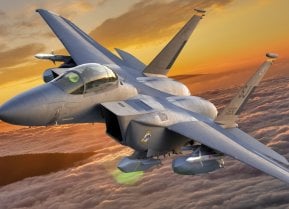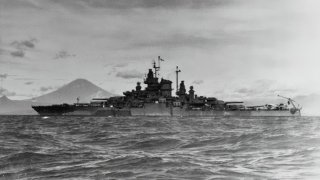U.S. Navy's USS West Virginia Battleship: 32,000 Tons of Raw Power
Although Battleship USS West Virginia was designed to be the fourth Colorado-class vessel to enter service, the cancellation of the planned USS Washington made her the third battleship to be completed. Like her sister-ships, West Virginia was equipped with a main battery of 16 in/45 caliber Mark 1 guns.
Summary: Designed during World War I, the U.S. Navy's Colorado-class battleships represented the last of the pre-Washington Naval Treaty era, with three out of four planned ships—Colorado, Maryland, and West Virginia—completed. These vessels, successors to the Tennessee-class, were equipped with formidable 16-inch guns and featured advancements like a clipper bow and turbo-electric transmission for improved sea-keeping and propulsion. The USS West Virginia, notably damaged during the Pearl Harbor attack, was salvaged and later played a significant role in the Pacific theater, earning five battle stars. The Colorado-class marked the pinnacle of U.S. battleship design until the advent of the North Carolina-class on the eve of World War II.
Meet the Colorado-Class Battleships
Designed during the First World War, the U.S. Navy’s Colorado-class battleships were the last of its kind completed pre-Washington Naval Treaty. Following the war, the major Allied powers penned an agreement that limited displacements and armaments of warships to quell the arms race.
While four keels in this class were initially laid, only three battleships were completed and entered service with the Navy: Colorado, Maryland, and West Virginia.
Notably, the Colorado battleships were the last and most formidable vessels to be constructed by the Navy until the eve of the Second World War when their North Carolina successors were introduced.
The History of the Colorado-Class:
The Colorado ships were largely derived from the earlier Tennessee-class. However, the new battleships were fitted with 16 inch 45 caliber guns in four dual turrets, rather than the twelve incorporated on the Tennessee vessels. All three of the Colorado battleships measured roughly 624 feet in overall length and displaced 32,600 tons.
Similar to both its Tennessee and New Mexico predecessors, the Colorado battleships were built with a clipper bow to ensure they stay dry in heavy seas. This new class was also powered by turbo-electric transmission, which enabled the turbines to run at top speeds without regard to propeller speed.
Introducing the USS West Virginia
Although Battleship USS West Virginia was designed to be the fourth Colorado-class vessel to enter service, the cancellation of the planned USS Washington made her the third battleship to be completed. Like her sister-ships, West Virginia was equipped with a main battery of 16 in/45 caliber Mark 1 guns.
Additionally, she was fitted with an anti-aircraft battery of eight 3 in/50 caliber guns and had a 21 in torpedo tube mounted in her hull.
Operational History
Battleship USS West Virginia was commissioned in 1923 and would spend the next two decades conducting routine training exercises and standard deployments until the Second World War.
When Japan launched its assault on Pearl Harbor in 1941, West Virginia was one of the vessels positioned on Battleship Row. She was badly damaged by torpedoes but ultimately survived the onslaught and returned to service just in time for the Philippines Campaign.
As detailed by the Navy, “In that raid, the battleship was hit by two bombs and at least seven torpedoes, which blew huge holes in her port side. Skillful damage control saved her from capsizing, but she quickly sank to the harbor bottom. More than a hundred of her crew were lost. Salvaged and given temporary repairs at the Pearl Harbor Navy Yard, in April 1943 West Virginia steamed to the West Coast for final repair and modernization at the Puget Sound Navy Yard”
Following her service in the Philippines, Battleship West Virginia joined the Navy’s Fifth Fleet in 1945 to prepare for the attack on Iwo Jima. Subsequently, she participated in the Battle of Okinawa. Overall, West Virginia earned five battle stars during the war despite missing out in the first few years of the conflict due to damage sustained during the attack on Pearl Harbor.
Today, several parts of West Virginia are preserved in locations throughout the country.
About the Author: Maya Carlin
Maya Carlin, National Security Writer with The National Interest, is an analyst with the Center for Security Policy and a former Anna Sobol Levy Fellow at IDC Herzliya in Israel. She has by-lines in many publications, including The National Interest, Jerusalem Post, and Times of Israel. You can follow her on Twitter: @MayaCarlin.


